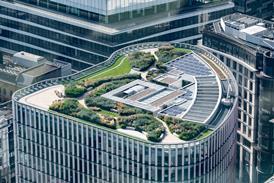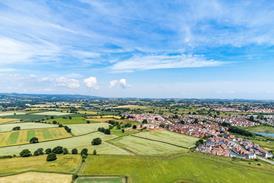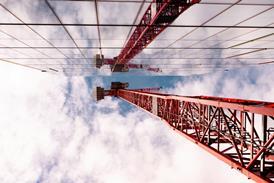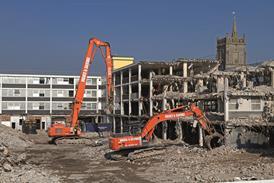QS Northcroft, which was commissioned last month to study the costs and programme for the New Parliamentary Building, blames any extravagance on the project's brief. The firm refused to comment, but sources who have seen its report say MPs wanted an expensive building, approved themselves an expensive building and are getting an expensive building.
One industry source said: "The design that was approved by the house has a great similarity to what is being built. The die was cast a long time ago, and this is what Northcroft are saying.
"If it's not value for money today, you have to ask why it was approved years ago. Everyone agreed it was fine to go ahead with the brief in front of them then. Everything was on the table in front of them – it was all there. "They voted for it themselves then. MPs may wish it differently in a new political climate." The report makes it clear that MPs also approved the project's budget, albeit at a much lower level because, in the past six years, inflation and delays have added considerably to its cost.
The report by Northcroft, which has a long track record in auditing troubled projects and running major schemes itself, is understood to say that the structure for approving the building might have been flawed. There was no single point of responsibility, with the House of Commons Accommodation & Works Committee referring recommendations to MPs, who approved the project themselves.
"Sitting on top of each other in their confined offices, and with no one to point the finger at if things went wrong, of course the people due to sit in the building approved it," the source said.
New parliamentary offices were first considered in the 1970s, and in the early 1990s, architect Michael Hopkins & Partners won a commission to do a feasibility study for it. The project brief was approved by the Accommodation & Works Committee and MPs. This approval formed the control for the project. This is clear from the project's audit trail, the report says. However, Northcroft says, in some senses, the high out-turn cost of the building could not have been anticipated. Fees have risen to £42m, and there was also an increase of £31m because of problems on Westminster Jubilee Line Station beneath Portcullis House.
Construction management does not come out of the Northcroft report badly. The project is being built by Laing and project managed by Schal.
The consultant is understood to believe that carrying out the highly complex project through any other procurement route would have been disastrous.
Asking a contractor to take the whole risk for the project through a lump-sum contract would have been unwise and a recipe for even more serious cost escalation, Northcroft says. On value for money, the report attempts to benchmark Portcullis House against other similar buildings. It concludes that the building is expensive in some ways but that, because of its unusual design, it is difficult to draw firm conclusions. But Northcroft says the long-term savings that will be made by the building's durable, bronze-clad design and high-class fittings should not be underestimated. In some ways, it is ahead of its time in looking at life-cycle costing, it says.
The building's complex system for sitting above the shallow Circle and District Tube lines is also to be applauded, the QS says.
Northcroft does not believe the cost and programme for the project are at any further risk, and recommends some minor organisational changes. Improved communication between the construction team could improve matters on site, it says. The report finds it difficult to attach any blame to project QS Gardiner & Theobald because, apart from the delays and the rise in inflation, the scheme is on budget.
Northcroft was due to present its findings to the House of Commons Commission this week.






















